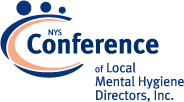NYS Conference of Local Mental Hygiene Directors, Inc. | An Affiliate of the New York State Association of Counties >
Hot Topics / Priority Issues
Brief: Law Enforcement and First Responder Diversion Pathways to Diversion Case Studies Series
Law enforcement officers and other first responders, such as emergency medical technicians, firefighters, and paramedics, are on the front lines of the illicit substance abuse epidemic, frequently responding to drug overdoses and calls for services involving individuals with substance use and co-occurring disorders. In response, a variety of law enforcement-led diversion and fire/emergency medical services (EMS)-led responses1 have emerged across the country. In partnership with substance use disorder (SUD) treatment providers, peers, and recovery personnel, these multidisciplinary programs are helping to reduce overdoses by connecting individuals to community-based treatment.
Law enforcement and first-responder diversion program models represent a pivotal opportunity to redirect individuals with SUDs, mental health disorders (MHDs), and co-occurring disorders away from jails or emergency departments and toward community-based treatment for substance use, mental health services, recovery support, housing, and social services.



